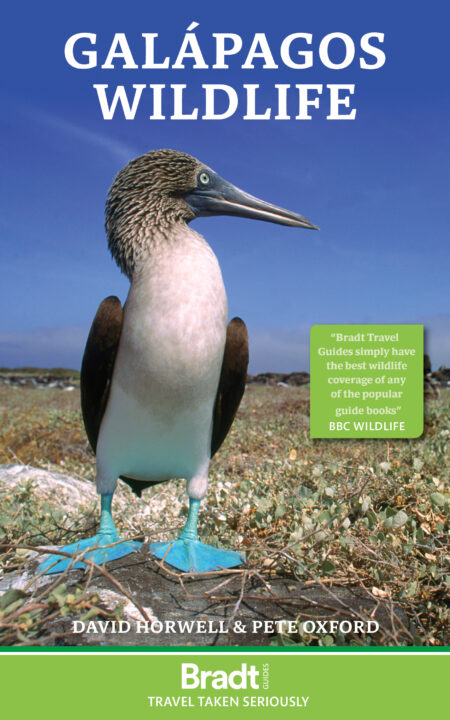The wildlife of the Galápagos Islands is legendary among wildlife enthusiasts, biologists and adventurous travellers alike. Due to the volcanic archipelago’s remote location – situated over 1,000km from the Ecuadorian mainland – the fauna here has long evolved in isolation, resulting in a unique compendium of species.
From the giant tortoise and lava lizards to the flightless cormorant and the curious-looking red-lipped batfish, these are the islands’ most impressive endemic species.
Giant tortoise
To think of Galápagos is to think of tortoises. Indeed, the very name Galápagos is derived from an old Spanish word referring to their saddle-like shape. They are undoubtedly the archipelago’s most celebrated animals.
While there are an estimated 20,000 on the islands today, it was very likely that there were once 200,000 distributed throughout the archipelago, separated geographically into 15 distinct forms.
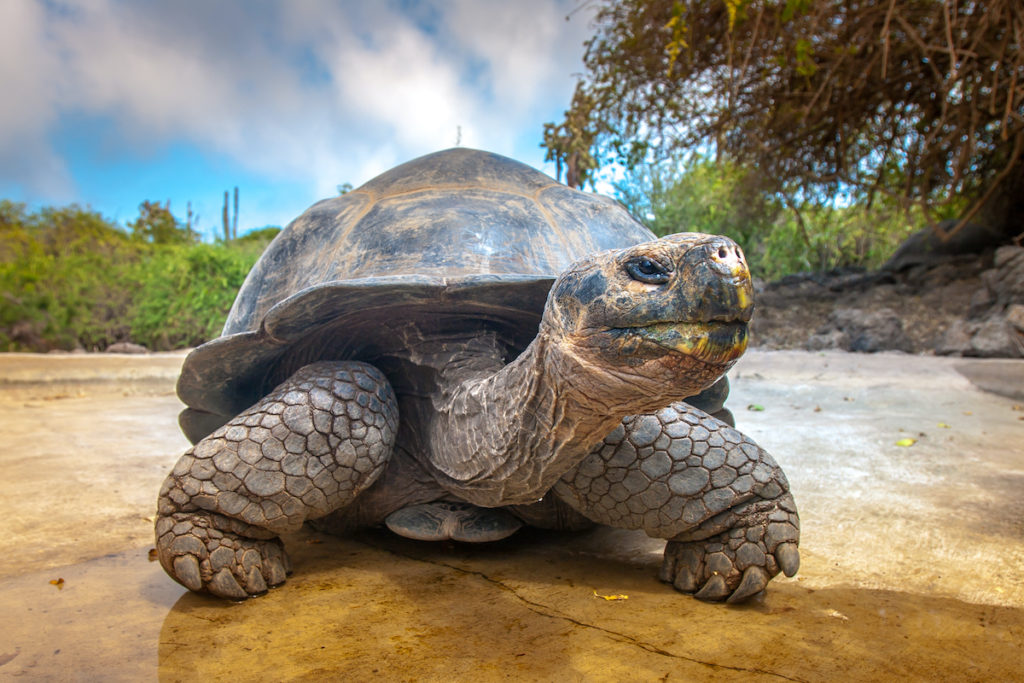
In the wild, a Galápagos tortoise may weigh up to a remarkable 270kg, with a curved carapace length of 1.22m. With great size comes longevity. Unsubstantiated stories abound of tortoises more than 200 years old, but probably the most reliable record of age is that of the Aldabran tortoise on St Helena (who goes by the name of Jonathan), thought to be 190 years old.
Today most tortoises in Galápagos live on Isabela, where each of the five main volcanoes has a relatively stable subspecies. Volcán Alcedo hosts over half the island’s entire tortoise population. The other large colony is on Santa Cruz, with other, smaller, populations on San Cristóbal, Santiago and Pinzón.
Marine iguana
No animal is more quintessentially Galápagueño than the marine iguana. The only truly marine lizard in the world, it is common throughout the coastline of the archipelago. Growing in excess of 1.5m and weighing up to 13kg, this large, black lizard feeds almost exclusively on marine algae.
Each morning, marine iguanas emerge from under vegetation and begin ‘charging their batteries’ under the rising equatorial sun. Lying flat to expose as much of their black surface as possible to the sun’s rays, they are seen at Punta Espinosa on Fernandina in their hundreds, all similarly oriented.
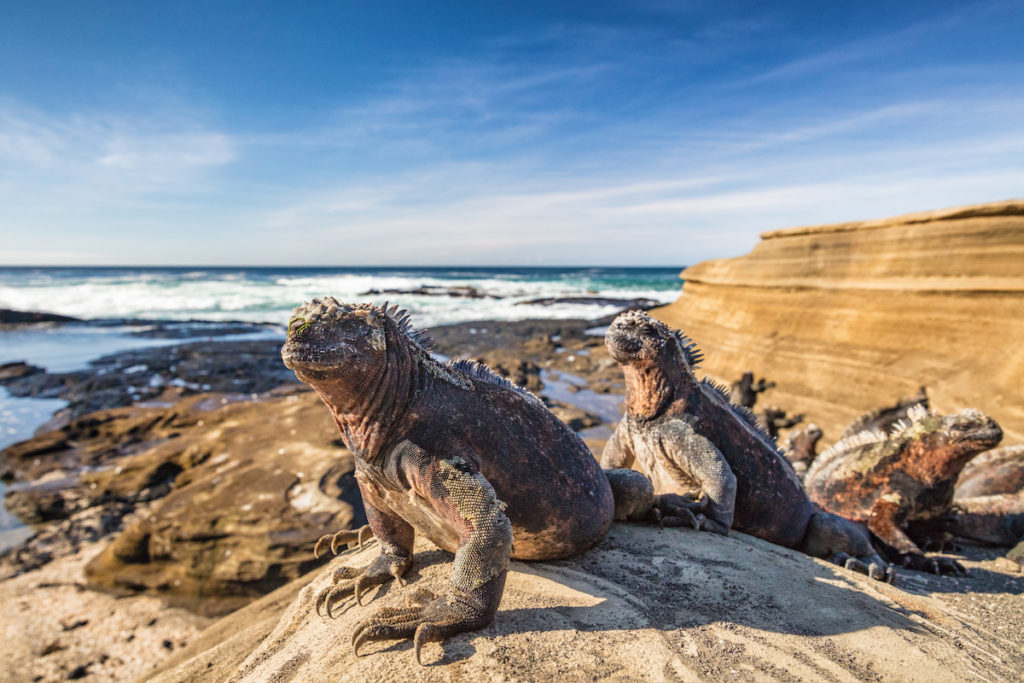
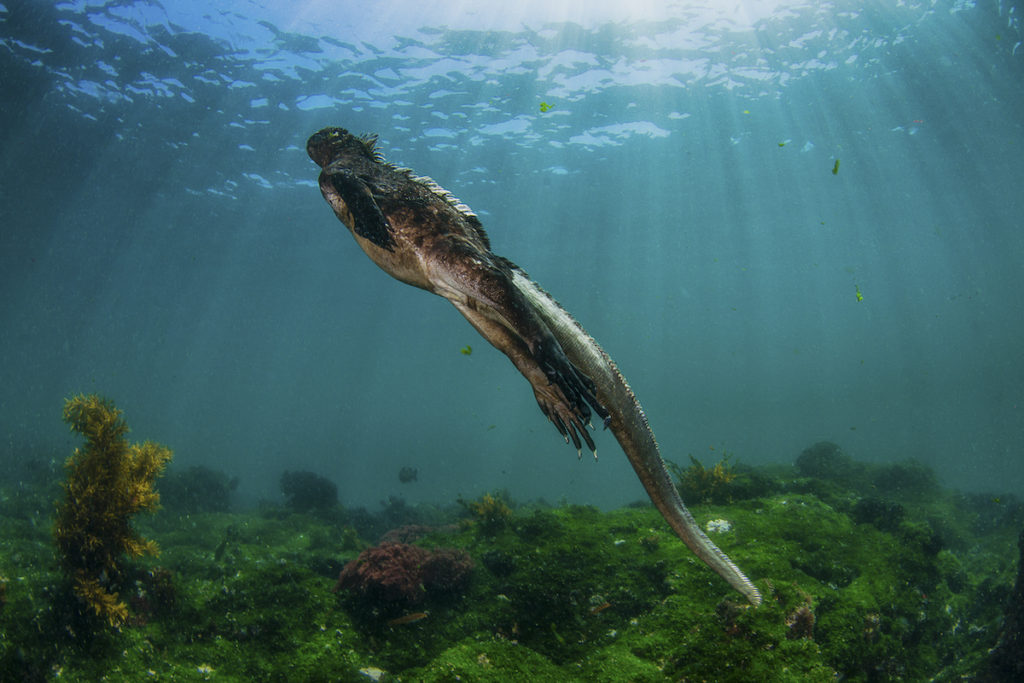
Having reached a core temperature of 35.5°C (a fairly typical optimal reptile temperature) or above, the big males are ready to take the plunge into the frigid waters of the Humboldt Current. Specially adapted to retain heat, they immediately lower their heartbeat to about half, lessening the contact of warm blood with their cold exterior.
Specially enlarged glands help remove the excess salt from their diet; they eject it forcibly in two plumes of fine spray from their nostrils, rather like a sneeze.
Lava lizards
There are ten endemic species of lava lizards spread out around the archipelago. Seven species each live on a single island (Española, San Cristóbal, Floreana, Pinzón, Pinta, Marchena and Santa Fe), while the others inhabit ten major islands (the remainder except for Genovesa, Darwin and Wolf where there are none).
Males are larger than females, the largest individuals being found on Española where they reach 30cm in length, double the length of those on most other islands.
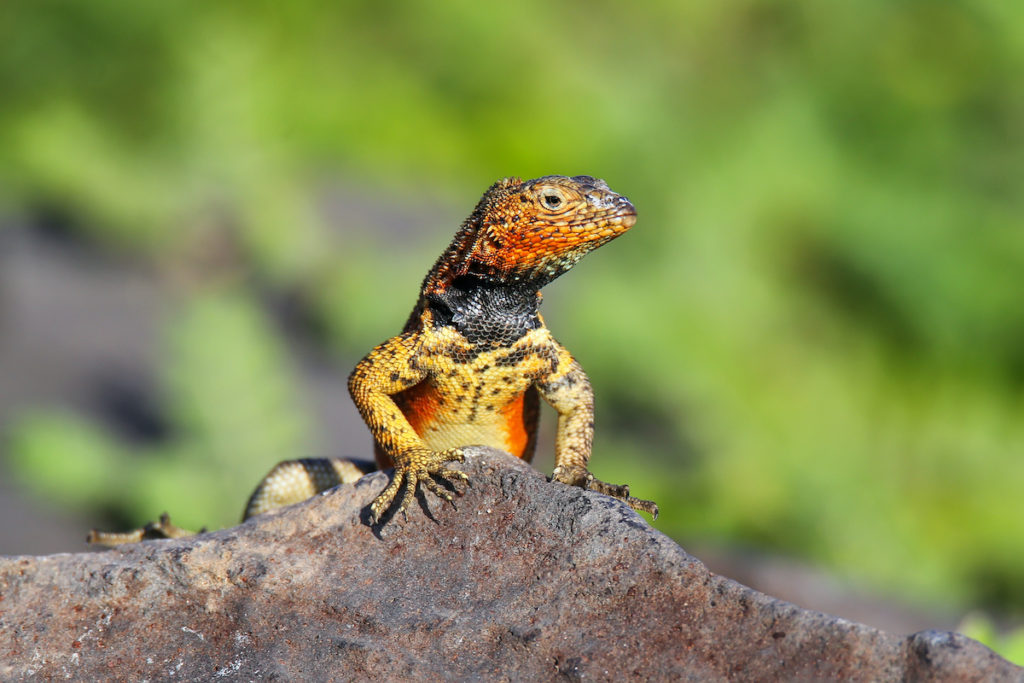
Lava lizards are highly predatory, taking any number of arthropods, including centipedes, scorpions, locusts and flies. Sometimes they are even cannabalistic! Very often they can be seen feeding around lounging sea lions, or from a carcass, ambushing the flies they attract.
Females tend to be prettier than males, usually having some red around the head or neck, while males have a more distinct pattern. For both threat and courtship, males display by doing a series of push-ups similar to the head-nodding performed by iguanas. The frequency and depth of each push-up is like a Morse code, only understood by members of the same species.
Galápagos hawk
This bird is one of the world’s rarest raptors, with up to 150 ‘pairs’, making it vulnerable as a species. The hawks are very commonly seen on most major islands and are unmistakable: juveniles rather cream-coloured, adults a dark chocolate-brown. They are so tame that they will even land on people’s heads!
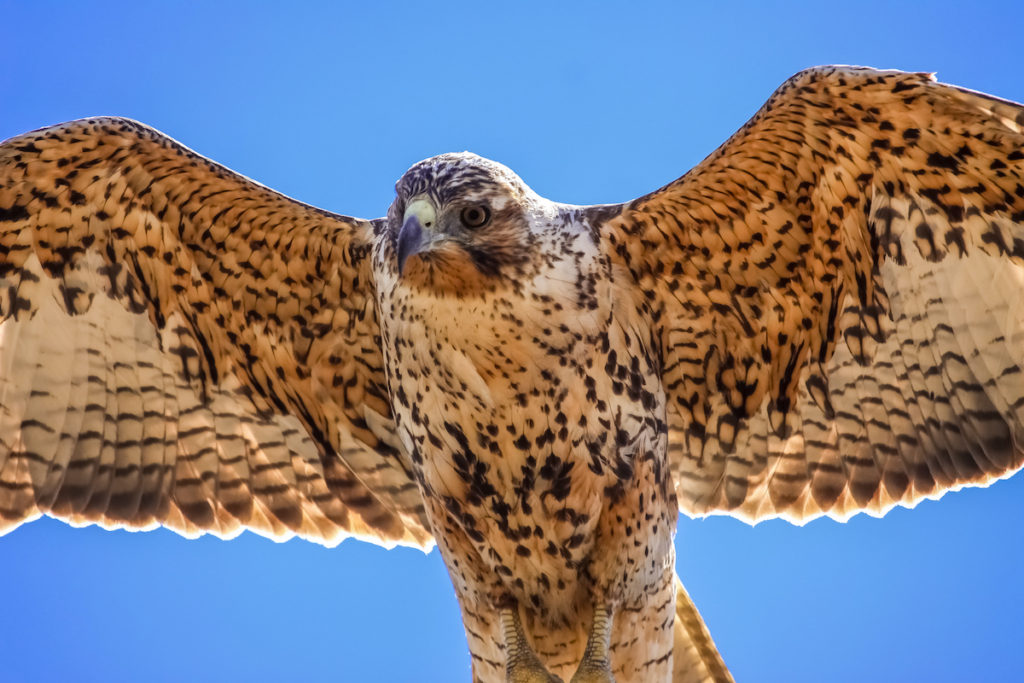
The endemic species has evolved with a breeding system called cooperative polyandry, whereby the female mates with up to four males and all then help her raise the chicks (up to three in a clutch). Apart from hunting anything from iguanas and snakes to rats and birds, the hawks are also the major scavengers of the islands, feeding on any rotting carcass – their favourite is goat.
Galápagos penguin
It seems incongruous to find penguins on the Equator. Indeed, the Galápagos penguin is the only penguin to nest entirely within the tropics, and also, in the case of those living on the northern tip of Isabela, the only one to nest naturally within the northern hemisphere. It is also the third-smallest penguin in the world, standing only 30cm or so tall.
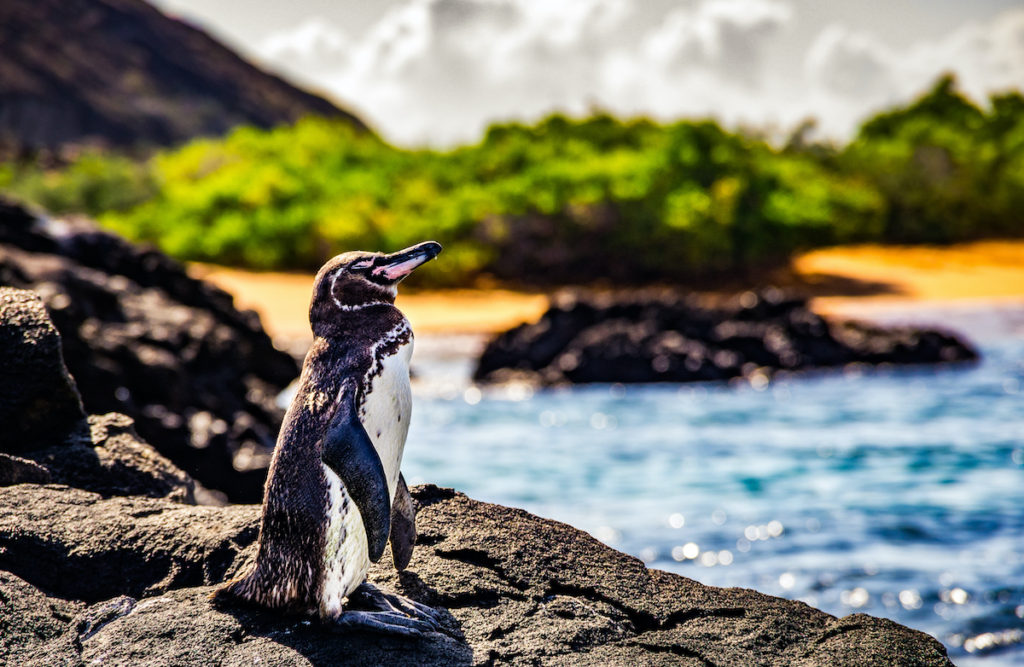
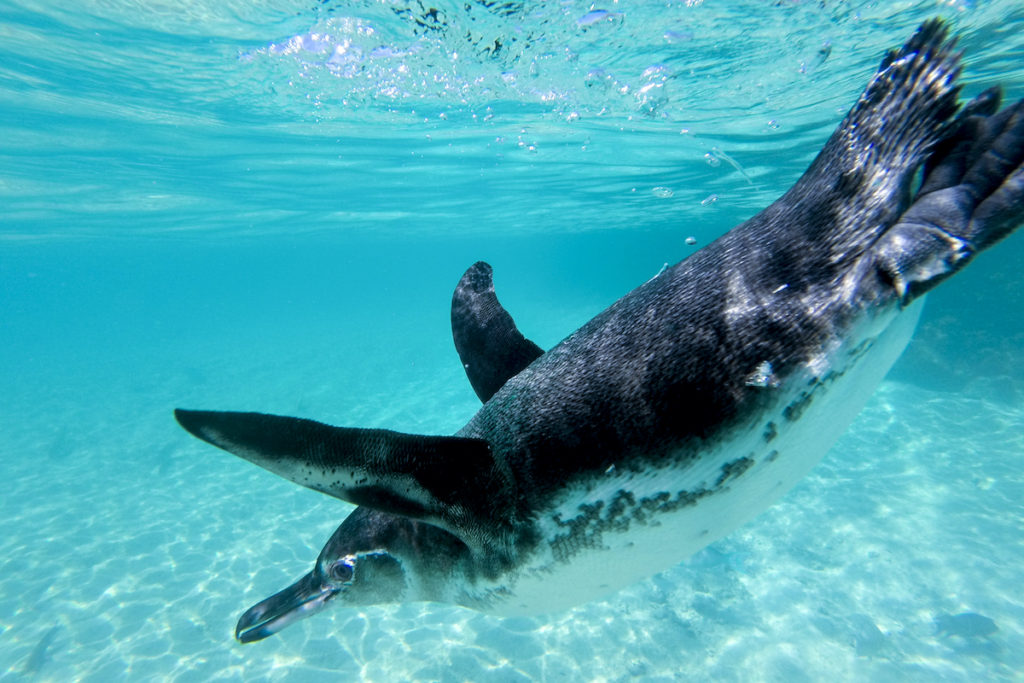
With no soft peat to make burrows for themselves, Galápagos penguins have taken to living in natural caves and crevices in the coastal lava. They mainly occur in the cooler waters around Isabela and Fernandina islands, although nesting pairs have been found on Floreana and Bartolomé.
Although penguins cannot fly in air, they do ‘fly’ underwater. Galápagos is one of the few places where a snorkeller can comfortably watch their underwater antics. Penguins may even use the swimmer as a barrier against which to herd a school of fish. These extremely streamlined birds can sprint at speeds of up to 35km/h.
Flightless cormorant
The flightless cormorant is the largest of the world’s 29 cormorant species, and the only one to have lost the power of flight. There are fewer than 1,000 pairs, all living on the coasts of Isabela (mostly in the west and northwest) and Fernandina. They remain extremely localised to their place of birth and many never range more than a few kilometres from their natal shore.
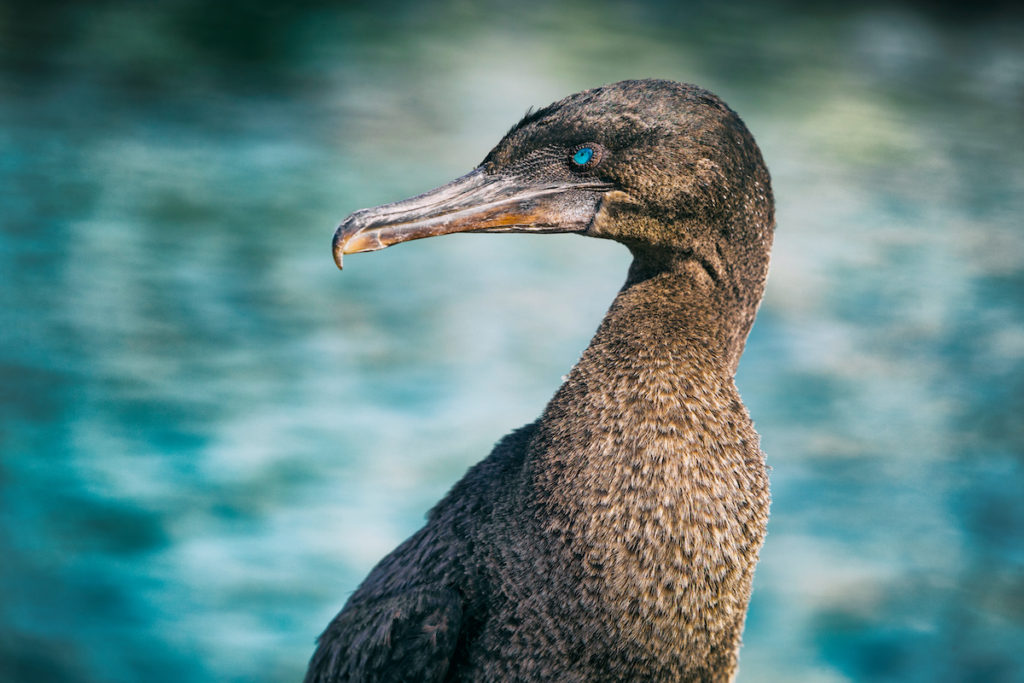
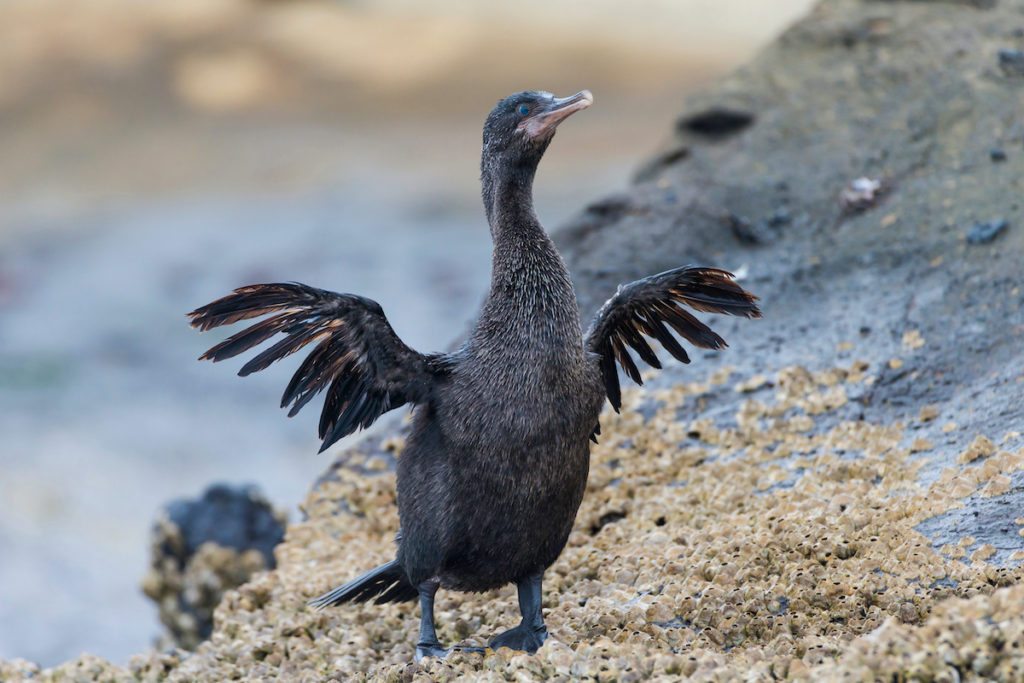
Although they cannot fly, cormorants retain vestigial wings which help them to balance when jumping from rock to rock. As they do not produce much oil to waterproof their feathers, their waterlogged wings must be held out to dry after returning to shore, in the classic cormorant pose.
Underwater, rather than ‘flying’ as the penguins do, cormorants keep their wings held close to their sides and kick with their powerful webbed feet, using their long, flexible necks as they delve their heads into holes in search of octopus or eels which they skewer with their heavy, hooked bills.
Galápagos fur seal
The Galápagos fur seals are the smallest of the world’s seven fur seal species, with males only reaching 65–80kg in weight and females up to 27kg. Their stronghold lies in the upwelling zones in the west of the archipelago, away from most visitor sites. The best place to see fur seals is at Puerto Egas on Santiago.
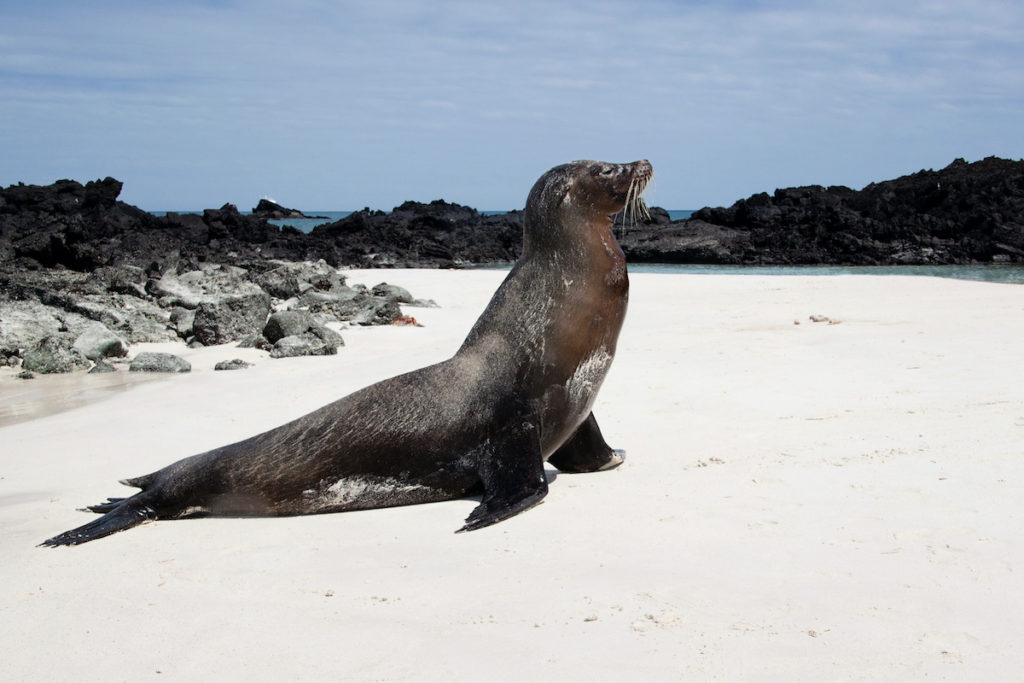
Fur seals rest in shady lava crevices and avoid body contact completely. They have a very dense underfur (approximately 300,000 hairs per square inch), growing between the longer, sparser, guard hairs. With large eyes and excellent night vision, they are able to forage after dark, feeding on the deeper-water lantern fishes which migrate upwards at night.
Red-lipped batfish
This bottom-dwelling fish is a curious species. By day it ‘walks’ along the sea floor on flattened fins that act more as legs. At night it rises to the surface.
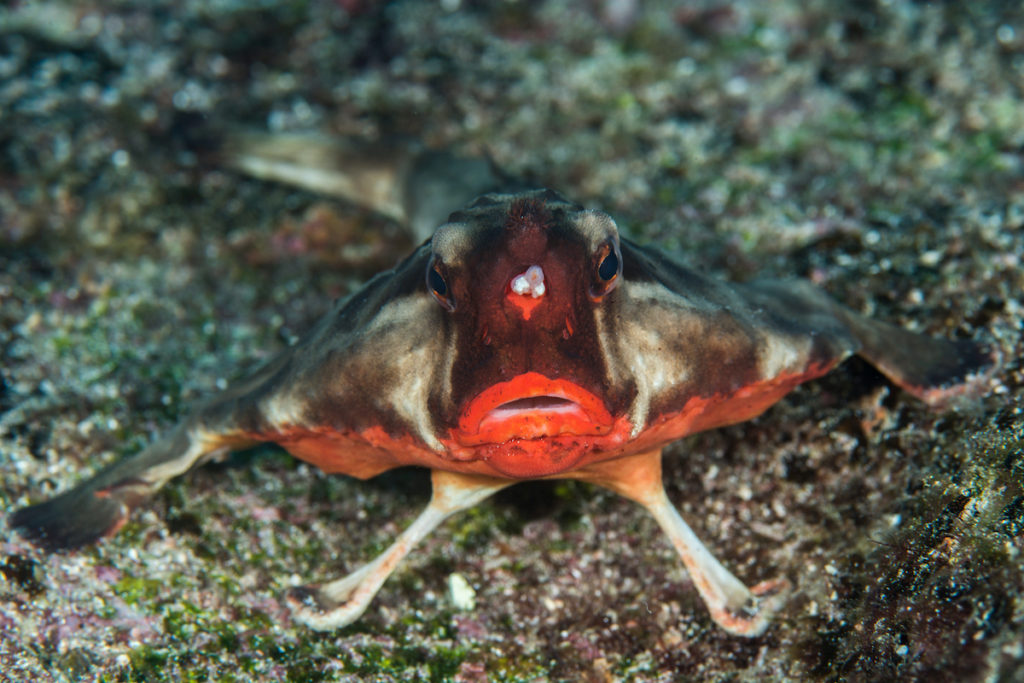
It has a long snout and bright red lips; the rest of the body is brown on top, creamy white below. Elsewhere in the world, batfish are extremely wary, but here they will allow scuba divers to approach closely.
More information
Discover more in our guide to the Galápagos Islands:
